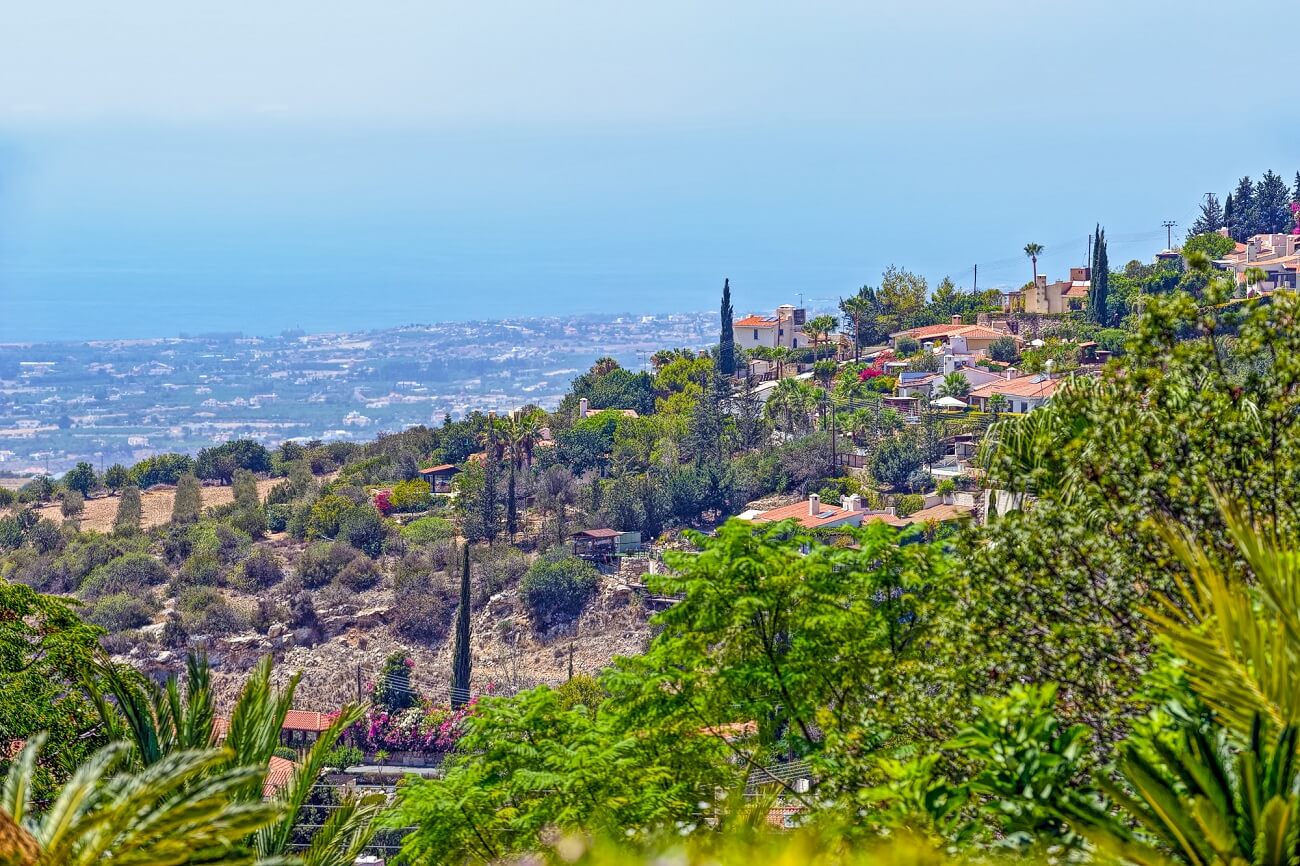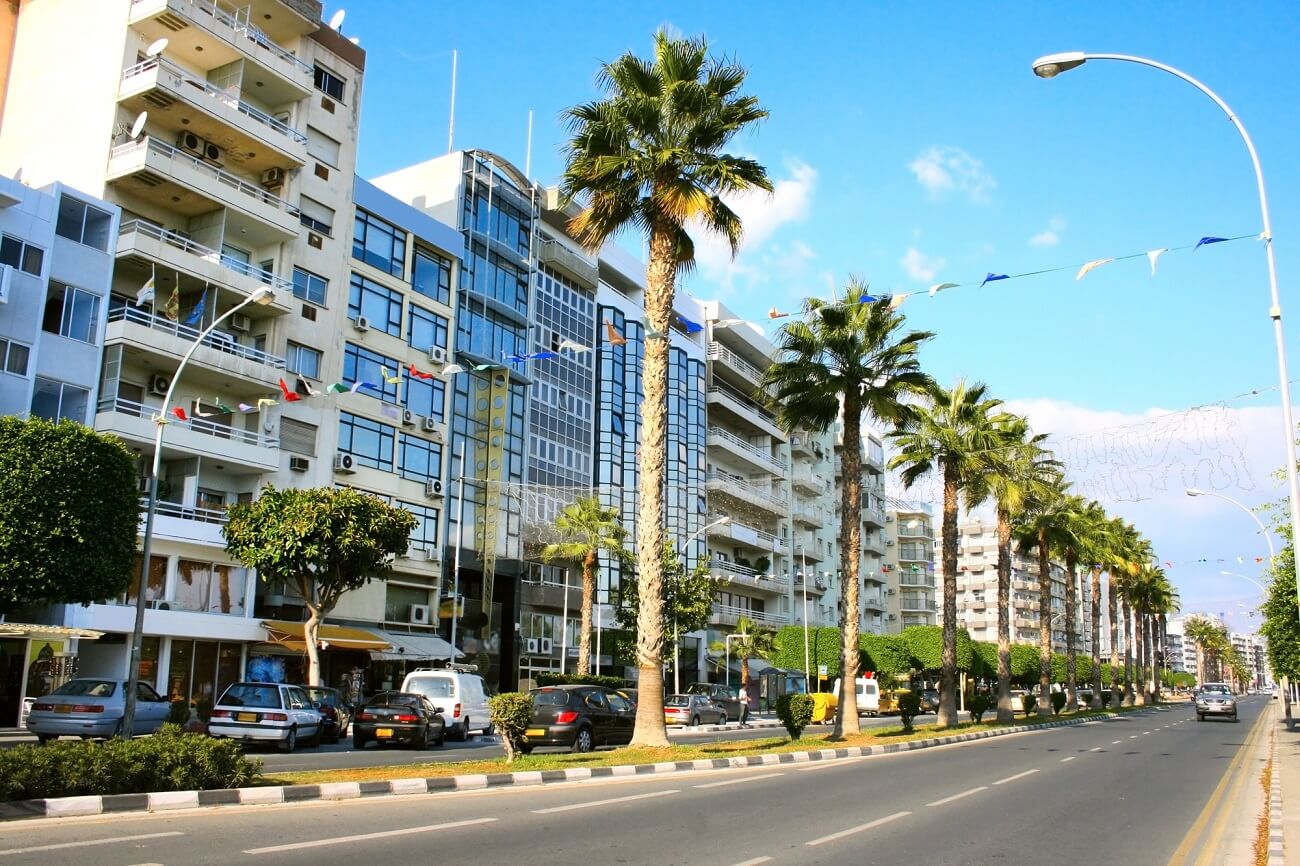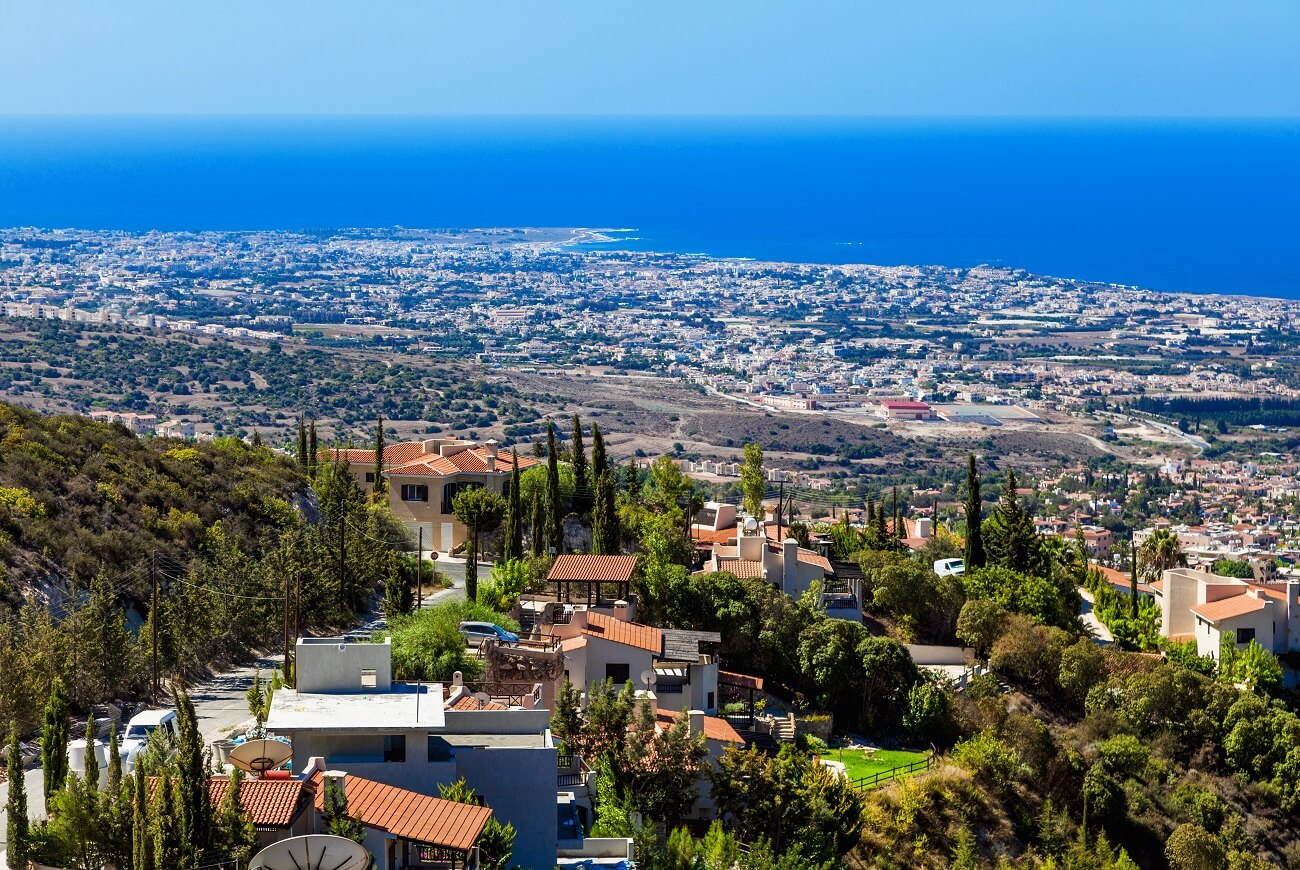

Paphos is an ancient city in the southwest of Cyprus, one of the main resorts of the island. According to legend, Paphos is the birthplace of the ancient Greek goddess Aphrodite. Among the more earthly historical figures who once lived here is the proconsul of Cyprus, orator Mark Thulius Cicero. An amazing city where holidays on the sea coast can be combined with excursions and visits to historical architecture. The entire old part of Paphos is included in the UNESCO World Heritage List, so there is certainly something to see here. Check out the list of the most popular attractions in Paphos and hit the road!

Depositphotos
Ancient ruins and castles in Paphos
Archaeological park
Perhaps one of the main tourist attractions of the city. The archaeological open-air museum is based on a large-scale excavation site that has been going on for more than 50 years. The most interesting objects of the extensive museum are the ruins of the ancient city of Nea Paphos, where you can see a whole complex of mosaics from the ancient Roman period, which has survived to this day. The most impressive fragments are in the House of Dionysus. Also in the park you will see the ruins of the Romanesque fortress Saranta Kolones, erected in the 7th century. Rich decoration and impressive walls have been preserved in the House of Theseus. Some of the museum's objects, including the ancient theater, date back to the 2nd century AD.
- Visit cost: up to 16 years - free of charge. Adult ticket - €4.5.
- How to get there: from the city center by bus number 610, from the Kato stop Paphos - Nos. 603, 611, 615, 631, from Karavella Station - No. 618.

Depositphotos
Paphos Castle
Medieval castle-fortress at the harbor of Paphos (Pafos Castle), near Fort Saranta Kolones. It was founded in the first half of the 13th century. For almost a thousand years of history, the castle has experienced several destructions, has witnessed many events and a change of power in Cyprus. The part of the fortress that has survived to this day was restored by the Ottoman Turks in 1592. Paphos Castle is located in close proximity to the Archaeological Park.
- Cost of visiting: a walk through the courtyard on the first level of the castle is free. Rise to the second floor with an observation deck - € 2.5.
- How to get there: by bus to the Harbor stop in the Kato area Paphos, then walk about 600 meters.

Depositphotos
Tombs of the Kings
An extensive necropolis with rich ancient Roman burials. This place got its name precisely because of the luxurious decorations for that era, and not because representatives of the royal dynasties are buried here. Many tombs date back to the 6th century BC. The underground cemetery was active until the 3rd century AD. Nowadays, catacombs with burials carved into the rock are of great interest to researchers and connoisseurs of ancient artifacts. Stone stairs, Doric columns, wall frescoes and ancient facades - here you can feel the incredible atmosphere of the place and touch the history.
Inspection of the Royal Tombs of Paphos is worth a separate day or even several. Be sure to choose a not very hot day for walking, stock up on comfortable shoes, a hat, water and provisions.
- Admission fee: €2.5.
- How to get there: from the center of Paphos by bus number 615.

Depositphotos
Ruins of the Temple of Aphrodite
The most incredible ruins that can be found in the vicinity of Paphos have become a real tourist mecca. Near the small village of Kouklia, 16 kilometers from the city, there are the ruins of an ancient temple built as a place of worship for the ancient Greek goddess of Love Aphrodite in the 12th century BC. That is, some fragments of the ruins are witnesses of an era more than 3 thousand years ago. After the earthquake in 77, the temple was rebuilt.
It is noteworthy that excavations at the site of the ruins have not stopped since 1887. Over the years, many valuable artifacts have been found, including a unique clay sarcophagus dating back to the 5th century BC. It and other finds are preserved in a small museum next to the ruins of the sanctuary.
- Admission fee: €4.5. Children under 16 years old - free of charge.
- How to get there: by car or taxi. It will be convenient and interesting to visit the ruins as part of an excursion group.
- GPS coordinates: 34.70948472024839, 32.573453700707255.

Depositphotos
Religious architecture of Paphos
Church of Panagia Theoskepasti
The Byzantine-style Orthodox Church rises on an old cliff, which is part of an ancient fortress wall. The time of the foundation of the first church, which was located on the same place, dates back to the 7th century. In the Middle Ages, a Byzantine basilica was located here. The modern church of Panagia Theoskepasti was rebuilt in the 30s of the 20th century. This is a symbolic place for Orthodox Christians. Within the walls of the church, a silver-plated icon of the Most Holy Theotokos is preserved, which, according to legend, was painted by the Evangelist Luke.
How to get there: by public transport to Paphos harbor (Harbor stop).

Depositphotos
Church of Panagia Chrysopolitissa and St. Paul's Pillar
In the 6th century, the ancient basilica of Panagia Chrysopolitissa was considered the largest and richest Christian church in Cyprus. After the Arab invasion, unfortunately, the church was destroyed. In its place, closer to 1300, a Gothic church was erected, turned into a mosque with the arrival of the Ottomans on the island. Turks and destroyed in the 16th century. Today it is an ancient and holy complex of church ruins, known by several names - the Church of Panagia Chrysopolitissa, the Church of St. Kyriaki or the Church of St. Paul. Services are held in the current temple near the historical ruins.
Noteworthy are the historical columns next to the ruins. According to legend, at this place in the year 45, the Holy Great Martyr Paul was subjected to scourging, being tied to one of the columns. This event can be read on one of the ancient stones.
How to get there: the church and the column are located on the territory of the Archaeological Park. From the bus stop Harbor about 300 meters on foot.

Depositphotos
Monastery of St. Neophyte the Hermit
10 kilometers from Paphos, you can visit another interesting architectural object - the old monastery, founded in the 12th century by the Neophyte the Recluse. The main monastery church of the Holy Mother of God dates back to the 16th century. This is a quiet, atmospheric place where the centuries-old walls are saturated with the history of the monastery. The main relic that attracts tourists is the ancient frescoes created during the life of Neophyte. Also in the monastery there is a museum with a collection of ancient icons, manuscripts and antique ceramics.
- How to get there: The monastery of St. Neophyte is located near the village of Tala. From Paphos it can be reached by bus from Karavella Station, by taxi or by car.
- GPS coordinates: 34.8467151776821, 32.446274955284835.

Depositphotos
Chrysoroyatissa Monastery
Another significant object in the history of the Cypriot Orthodox Church, located in the vicinity of Paphos. The current monastery of Chrysoroyatissa was founded by the hermit Ignatius back in 1152. Modern buildings date from 1770. The monastery has a collection of icons and church attributes of the 12th-20th centuries.
- How to get there: Chrysoroyatissa Monastery is located 32 kilometers northeast of Paphos, in the mountain village of Panagia.
- GPS coordinates: 34.91005814897524, 32.61863559761629.

Depositphotos
Museums in Paphos
Byzantine Museum
More precisely, the Byzantine Museum of the Holy Metropolis of Paphos, which reflects the Orthodox culture of the western territories of Cyprus. Within its walls you can see the rich heritage of Byzantine church art, collected from the ancient monasteries and churches of the island. One of the oldest artifacts of the museum is the icon of Agia Marina dating back to the 8th century. Ancient frescoes, iconostases, carved wooden products, collections of church jewelry with precious stones, iron church utensils from previous centuries. In addition, in the museum you can see ancient handwritten books and the first printed gospels.
- Entry fee: €4.
- Location: The Byzantine Museum of Paphos is located in the village of Geroskipou, on Makariou Avenue .
- GPS coordinates: 34.76070826449305, 32.4515299117135.
Ethnographical Museum
An incredibly diverse collection of antiquities is displayed in the small but significant Ethnographic Museum of Paphos. According to the old version - the Museum of Folk Arts. The exposition is housed in a 19th century mansion. The history of the museum began with the private collection of Giorgios Eliades, who was fond of collecting historically significant finds from Cypriot villages in the Paphos region. Today, the museum presents household items, cultural paraphernalia, jewelry and handicrafts from different eras - from the ancient period to the present.
- Admission fee: €2.6.
- Location: Exo Vrisis Street 1, Paphos.
- GPS coordinates: 34.773085879709704, 32.42137654010626.
Steni Village and Museum of Village Life
Another authentic place with echoes of the history of folk crafts and art of Cyprus. Steni Village and Museum - a "home" museum with a collection of household and interior items, antique furniture, clothes and utensils is located in a small village, 35 kilometers from Paphos. Not only the collection of the village museum, but the settlement itself in the foothills of the Troodos is very interesting for a walk. Opposite the museum, you can visit the original tavern and taste the local cuisine. It will be convenient to combine a trip to Steni with a walk through the Akamas reserve and a visit to the Baths of Aphrodite.
- The cost of visiting the museum: free.
- GPS coordinates: 35.00564400513801, 32.47075913065747.
Hamam Museum
An unusual building, from the outside it looks more like an ancient shack than a museum. A small stone building is a former Turkish bath built in the 13th century. Inside - a small exposition of hygiene items from different historical eras of Cyprus. After the restoration, tourists were allowed to view the ancient hammam from the outside and inside.
Location: Poseidonos Avenue, Kato paphos.
Natural attractions of Paphos
Aphrodite Bay
A huge natural rock on the picturesque coast is one of the most visited natural places in Cyprus. Stone of Aphrodite, or Petra tou Romiu, attracts with ancient Greek legends associated with the goddess of Love, and incredible landscapes. According to legend, this is the place where Aphrodite was born. Several large stones are scattered along the rocky coast, each of which is associated with one or another legend. Therefore, a trip to the rocks as part of an excursion will be more atmospheric. This is a great location for walking and incredible photos. Near the stone of Aphrodite there is a restaurant and a tourist pavilion.
- How to get there: by car south of Paphos on highway B6, past the village of Kouklia, to the sign for Aphrodite's Rock viewpoint. By bus number 630 from Karavella Station in the center of Paphos.
- GPS coordinates: 6636964096293, 32.627182997775215.

Depositphotos
Coral Bay
The most remarkable beach of Paphos is located 13 kilometers from the central promenade. This is Coral Tourist Resort Bay with modern hotels, inns and a beautiful crescent-shaped sandy coastline. Coral Bay Beach is the owner of the Blue Flag, that is, it complies with all the standards of the EU committee. It has all the necessary infrastructure for recreation - cafes, restaurants, rental of sun loungers and umbrellas, water activities and ATV rental . The bay got its name due to the presence of underwater rocks of coral origin, so it is recommended to enter the water in special shoes.
How to get there: from the central promenade of Paphos by bus number 615.

Depositphotos
Akamas Reserve
Akamas National Park is a picturesque peninsula on the Mediterranean coast, an excellent place for hiking among the Cypriot nature reserve. There are almost no asphalt roads here, but there is beautiful nature, Greek villages and the very atmosphere that real travelers are looking for. Things to do in Akamas Reserve:
- Walk along the 7 km Aphrodite Trail along the hilly coastline.
- Find the Baths of Aphrodite - a picturesque cave with a waterfall.
- Visit the ancient Avakas canyon with incredible rocky reliefs. The height of the rocks here reaches 30 meters.
- Walk along the Dionysus Trail, which passes through a dense pine forest with rare plant species.
- See the Blue Lagoon of Cyprus - one of the most spectacular natural spots on the island. The lagoon is popular with snorkellers.
On the territory of the reserve there is where to eat and relax, or even stay for the night. Hotels, restaurants and taverns are open here. To get acquainted with Akamas, it is better to set aside a few days. It will be an exciting journey!
Location: the Akamas peninsula is located 50 kilometers from the center of Paphos. By car, you need to move north along the B 7 highway to the city of Polis. Bus number 645 runs from the Karavella station in Paphos to the city of Polis, from where you will need to transfer to Akamas by a local fixed-route taxi to the village of Latchi.

Depositphotos
Interesting places
Promenade and harbor of Paphos
The beautiful promenade is the main place for the promenade along the resort of Paphos, more than 1.5 kilometers long. It runs along the harbor with a pier, connecting the historical and modern areas of Paphos. The embankment itself is also considered a historical place, because since ancient times it has been known as the largest port center of trade. In our century, there are numerous shops, fashion boutiques, restaurants, cafes and souvenir shops along the coast of the harbor. Walking along the embankment, you can see the historical buildings. It originates from the medieval fort, behind which is the oldest pier in Cyprus.
Today, yachts, boats and fishing boats are moored in the harbor, delivering fresh seafood to coastal taverns and restaurants. All sea excursions of the resort depart from here and water equipment rental points are located. Paphos Harbor is the main location for exploring Paphos, a meeting place and entertainment place for locals and tourists.
Location: Kato Paphos harbor.

Depositphotos
Aquapark Aphrodite
Great place to spend a hot day with the family. Paphos Water Park has modern infrastructure and all kinds of fun water activities. It is located near the city, in the vicinity of the village of Geroskipou. The entertainment complex impresses with its scale and variety of attractions for all ages. Separately, it is worth mentioning the original landscape design of the park and the entertainment program for young guests. On the territory there are several restaurants and fast foods , free parking and all the necessary infrastructure. Come, you won't regret it!
- Opening hours: from April to October, from 10:00 to 18:00.
- Admission fee: for adults - €31, for children under 12 years old - €18, for children under 3 years old - admission is free.
Location: 6 kilometers south of the center of Paphos. - How to get there: by bus number 611, taxi or car.
More articles
- Holidays in Bali: top 22 things to do on the island
- Nyepi in Bali - New Year or Day of Silence
- Rains in Bali: pros and cons of the wet season
- Hotels of Ayana complex in Bali
- Gunung Batur: how to get to the main volcano in Bali
- Likupang on Sulawesi Island in Indonesia
- Mauritius Attractions: 27 Best Places to Visit
- Bali for Two: 24 Romantic Getaway Ideas
- Top 20 Bali Tours: Itineraries, Offers, and Prices
- Bali's Best Beach Clubs - 13 Luxury Oases



